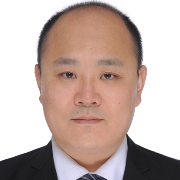Cluster Chemistry: Metal Clusters of the Main Group and Transition Elements
A special issue of Molecules (ISSN 1420-3049). This special issue belongs to the section "Organometallic Chemistry".
Deadline for manuscript submissions: closed (31 August 2021) | Viewed by 4041
Special Issue Editors
Interests: cryochemistry; solution chemistry of metastable group 14 monohalides; metalloid clusters of group 14 and group 11 elements; group 14 nanoparticles; single crystal x-ray structure analysis; cluster chemistry
Interests: transition metal-cluster; inorganic synthesis; X-ray structure; ionic liquids; tetracyanoborates; materials properties
Special Issue Information
Dear Colleagues,
In the last few decades, nanotechnology has increasingly become a molecular regime, leading to a growing interest in main group and transition metal cluster compounds as molecular models for metal nanoparticles. Many results are obtained within the field of precious transition metals due to easily available starting compounds and synthetic procedures, like the Brust–Schiffrin method. However, in recent years, synthetic routes to new cluster compounds have been successfully established as well. This has led to remarkable results in the field of cluster chemistry of metals, opening our eyes to the complexity within the nanoscaled molecular regime. In recent years, investigations have started to spread out to define the extraordinary material properties of such compounds, such as luminescence, X-ray absorption properties, singlet oxygen production, surface modification, nanostructuration, organics/inorganics hybrid composites, or functional surfaces, to name a few. Additionally, novel physical and chemical properties have been obtained for these cluster compounds that might be used in material science or for biological or (photo)catalytic applications.
This Special Issue aims to attract contributions from cluster chemistry from all metals and semimetals to further promote investigations on synthesis, structure, property, and applications of this novel group of cluster compounds, closing and/or bridging the gap to investigations in nanotechnology.
Prof. Dr. Andreas Schnepf
Prof. Dr. Martin Köckerling
Prof. Dr. Zhong-Ming Sun
Guest Editors
Manuscript Submission Information
Manuscripts should be submitted online at www.mdpi.com by registering and logging in to this website. Once you are registered, click here to go to the submission form. Manuscripts can be submitted until the deadline. All submissions that pass pre-check are peer-reviewed. Accepted papers will be published continuously in the journal (as soon as accepted) and will be listed together on the special issue website. Research articles, review articles as well as short communications are invited. For planned papers, a title and short abstract (about 100 words) can be sent to the Editorial Office for announcement on this website.
Submitted manuscripts should not have been published previously, nor be under consideration for publication elsewhere (except conference proceedings papers). All manuscripts are thoroughly refereed through a single-blind peer-review process. A guide for authors and other relevant information for submission of manuscripts is available on the Instructions for Authors page. Molecules is an international peer-reviewed open access semimonthly journal published by MDPI.
Please visit the Instructions for Authors page before submitting a manuscript. The Article Processing Charge (APC) for publication in this open access journal is 2700 CHF (Swiss Francs). Submitted papers should be well formatted and use good English. Authors may use MDPI's English editing service prior to publication or during author revisions.
Keywords
- Metalcluster
- Metalloid clusters
- Nanoclusters
- Polyhedral clusters
- Transition metal cluster
- Main group metal cluster
- Zintl compound
- Bonding
- Properties
- Metal–metal bonding
- Synthesis
- Crystal structure








